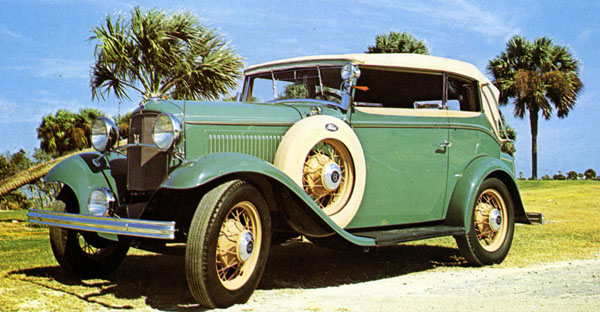Ford’s legendary 3622 cc flathead vee-eight engine – the V could have even stood for voluminous body space or for less space wasted on the engine room – was used by all of Ford’s overseas operations as well as by the parent factory, between 1932 and 1942 and then after the Second World War as well.
This engine became an American classic remaining in production for more than twenty years. When first introduced it produced 65 hp and when discontinued in 1953 power was double that of the original engine. The V8 gave the power of eight cylinders from a unit that had the length of a four-cylinder engine, though on a wide-angle unit (90 degrees) like the Ford. It was not really viable to use the same chassis as for a four-cylinder car, even though Ford did just that in 1932 and 1933.
Considering the clever engineering behind the V8 engine it was surprising that the rest of the engineering in the car was completely uninspiring. The three-speed synchromesh transmission was common to virtually every other American car and the brakes were mechanical all round. The average American engine of the 1930s developed its maximum output at around 3200 rpm at which speed simple splash lubrication sufficed.
The suspension was the classical Ford transverse-leaf type at both ends, highly suitable for driving over muddy tracks and across ploughed fields, but terribly bouncy for use on normal roads. The short 2.8-metre wheel-base did not help either, though on the 1935 model they moved the engine over the front axle giving some more body space and enabling the rear seats to be positioned within the wheel-base. This change meant the sacrificing of some of the elegance of the earlier models.
Differences between cars made in the USA and those made in Britain, France and Australia, as well as Germany, were mainly stylistic, rather than mechanical, though cars made in Britain and Germany retained their mechanical brakes right up to the outbreak of the Second World War. Only the very experienced car buff could pick whether a particular specimen came from Cologne rather than from Dearborn, Dagenham, Poissy or Geelong.
The car appeared under a variety of body styles and highly-tuned versions of the V8 engines appeared in a number of cars competing in the Indianapolis 500-mile race.
